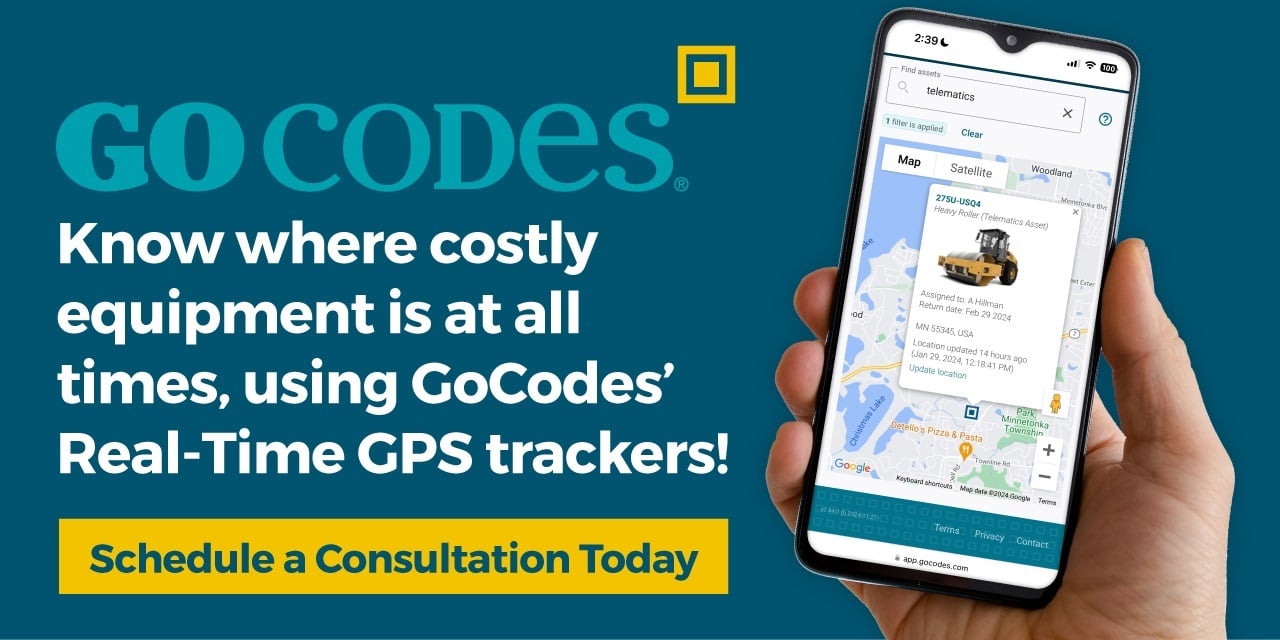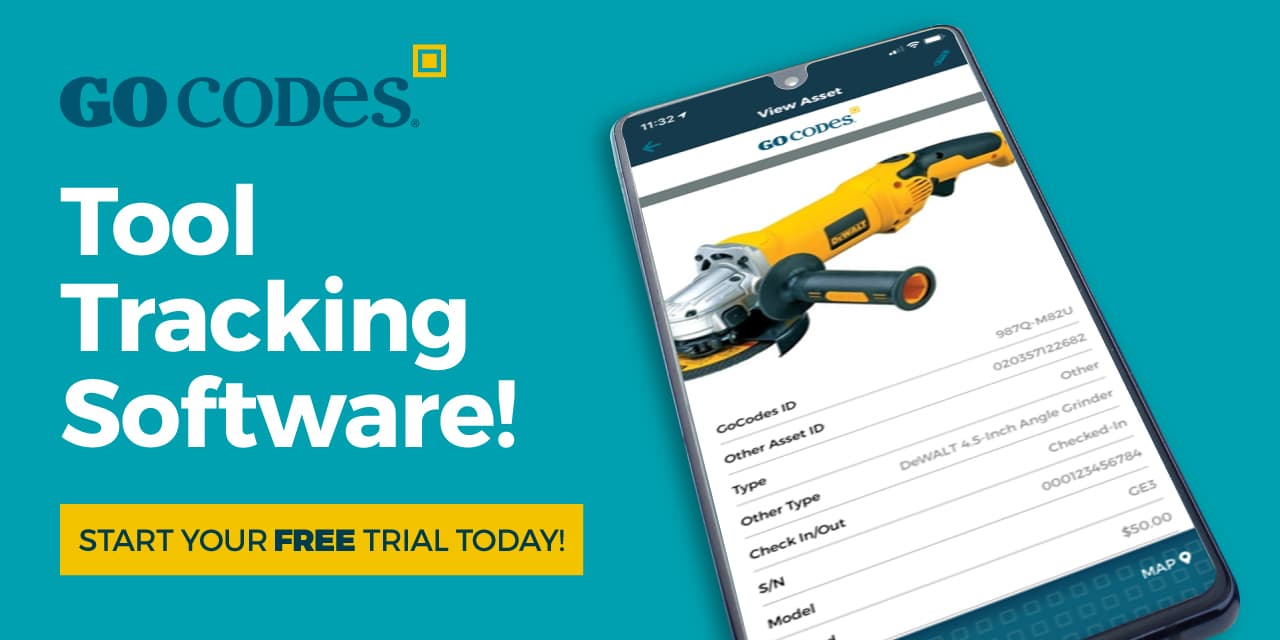Key Takeaways:
- Cloud solutions provide mobility and fresh data for managing fleet operations of all sizes.
- ADAS technology and driver monitoring systems reduce safety issues while enhancing fleet efficiency.
- Fleet managers rely on telematics systems for real-time monitoring and greater security.
- Businesses adopting AI-driven solutions elevate their decision-making but should be mindful of regulatory and safety challenges.
Fleet management is undergoing a profound transformation.
Cutting-edge technologies boost efficiency, safety, and profitability, setting new standards across various sectors, and construction is no different.
Whether you’re managing a small fleet or a large construction operation, understanding these advancements is key to staying competitive.
In this article, we’ll explore five game-changing technologies shaping the future of fleet management—and why you should embrace them now if you haven’t already.
Let’s dive right in!
In this article...
1. Cloud-Based Software
Cloud-based software provides seamless access to key data, making it one of the crucial technologies transforming fleet management today.
Unlike clunky on-premise software, these solutions offer real-time visibility and insights into crucial processes from any location and internet-connected device.
This unparalleled mobility is one of the reasons why cloud-based software dominates the market today, making it one of the drivers of digital transformation across different industries.
Nevertheless, many fleets have yet to adopt these systems.
According to a recent survey of 1,000 fleet managers in the US, outdated pen-and-paper methods like Excel spreadsheets are still very much present.
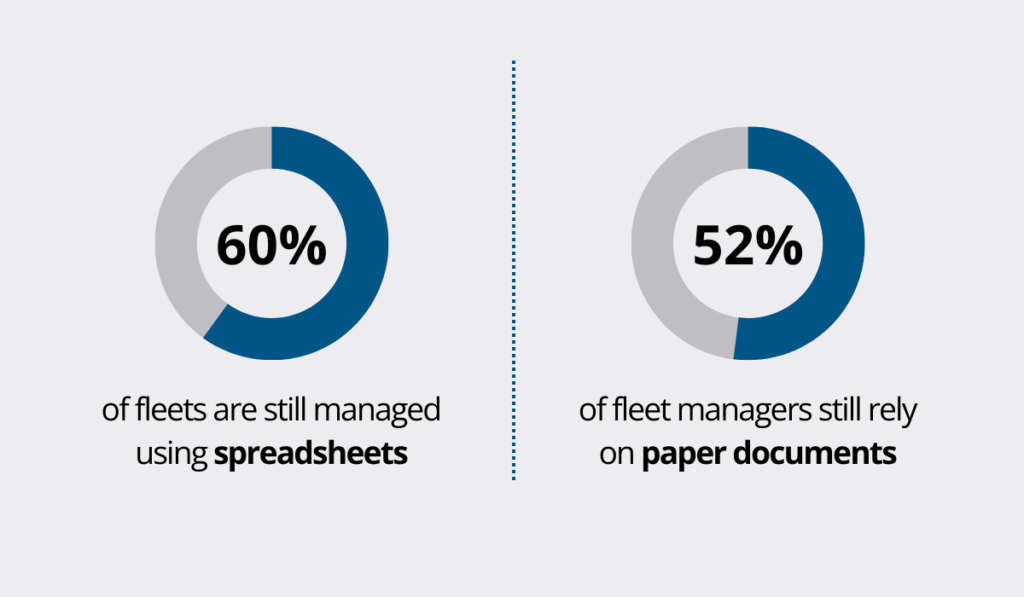
Illustration: GoCodes Asset Tracking / Data: Motive
The survey shows that in 2022, half of US-based fleets used neither on-premise nor cloud-based software.
Despite such concerning statistics, the shift to cloud-based software in the future seems inevitable, and it’s largely driven by critical benefits such as:
- centralized and easily accessible data,
- availability across multiple devices and locations, and
- simplified collaboration and more streamlined operations.
Various factors influence the decision to adopt specific software, but these advantages likely played a key role in this next example.
RVOS, an offshore construction and marine service provider, transitioned to a cloud-based system in 2018.
Partnering with ABS Nautical Systems gave RVOS instant access to vital fleet data, driving smarter decisions, as former COO Stephen Schwarz notes.
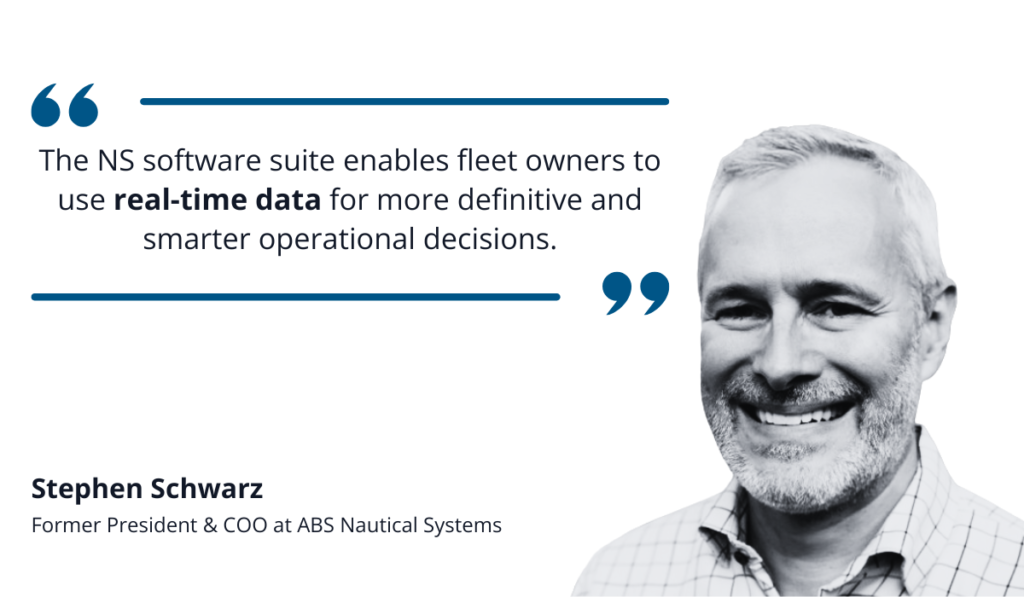
Illustration: GoCodes Asset Tracking / Quote: Seatrade Maritime
Cloud-based software’s rapid deployment works for making quick operational decisions, but it also supports continuous improvement in operational efficiency.
Thanks to meticulous record-keeping, fleet managers don’t have to worry about staying on top of new regulations and ensuring compliance.
Another key advantage of cloud-based solutions is that they’re incredibly versatile and scalable.
In other words, you can meet evolving project demands across various operations, not just fleet management.
Take the example of Saudi Arabia’s Diriyah megaproject.
The 63 billion-dollar undertaking requires ongoing coordination of tens of thousands of workers working with just as much equipment and machinery.
Now, how do you handle all that?
You guessed it: the short answer is cloud infrastructure.
According to Diryah’s CTO, Michael Ibbitson, the company partnered with SAP Private Cloud Solutions to create a future-proof foundation for handling all the project’s complexities.
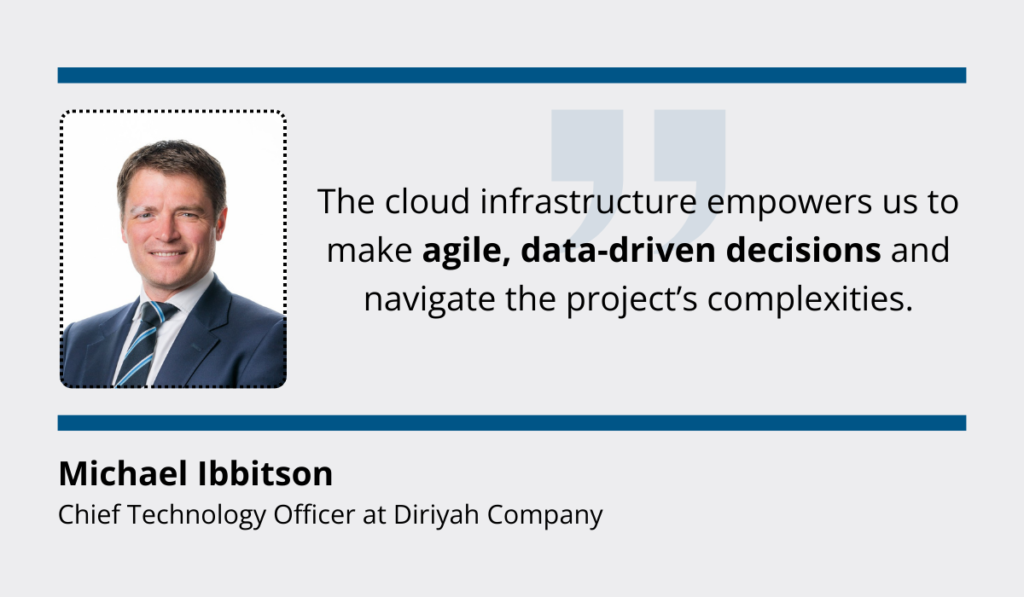
Illustration: GoCodes Asset Tracking / Quote: Construction Week Online
This includes all fleet-related decisions.
Remember that embracing cloud-based digital tools is a game-changer regardless of the size of your operations.
While the full potential of these powerful solutions is still unfolding, they already play a crucial role in boosting fleet efficiency and keeping projects on schedule and within budget.
2. Advanced Driver Assistance Systems (ADAS)
The last couple of years saw the rise of assisted driving technologies, with most newly-made vehicles coming equipped with these features.
Advanced driver assistance systems or ADAS rely on sensors such as cameras or radar to detect external hazards and help the driver adapt to changing conditions on the road.
Some notable features include:
- Automatic Emergency Braking (AEB),
- Blind-spot Warning (BSW),
- Electronic Stability Control (ESC), and
- Lane Departure Warning (LDW).
Ultimately, the goal is to reduce accidents and operational risks, meaning that the ADAS benefits fall into two broad categories: enhanced driver safety, and improved fleet efficiency.
The former promises safer driving conditions and is a major force propelling industry innovation and new legislation.
One notable example is the new federal rule passed by the U.S. Department of Transportation’s National Highway Traffic Safety Administration (NHTSA).
It requires that, from 2029, all newly manufactured light vehicles, including lighter vans and pick-up trucks used in construction, must have AEB.

Source: NHTSA
This legislation directly affects manufacturers, but this standardization has much broader implications.
Firstly, the rule will likely prompt large-scale adoption of automatic emergency braking technology, also changing standards for medium- and heavy-duty trucks.
Such a ripple effect would greatly influence fleet composition and operational strategies.
Furthermore, with AEB becoming a baseline requirement, integration of additional ADAS features won’t be far behind.
While ensuring compliance comes with plenty of challenges, there’s no denying the huge potential of ADAS technology.
According to a recent study, equipping all vehicles with ADAS would result in notable decreases in the six most common types of accidents recorded in 2019.
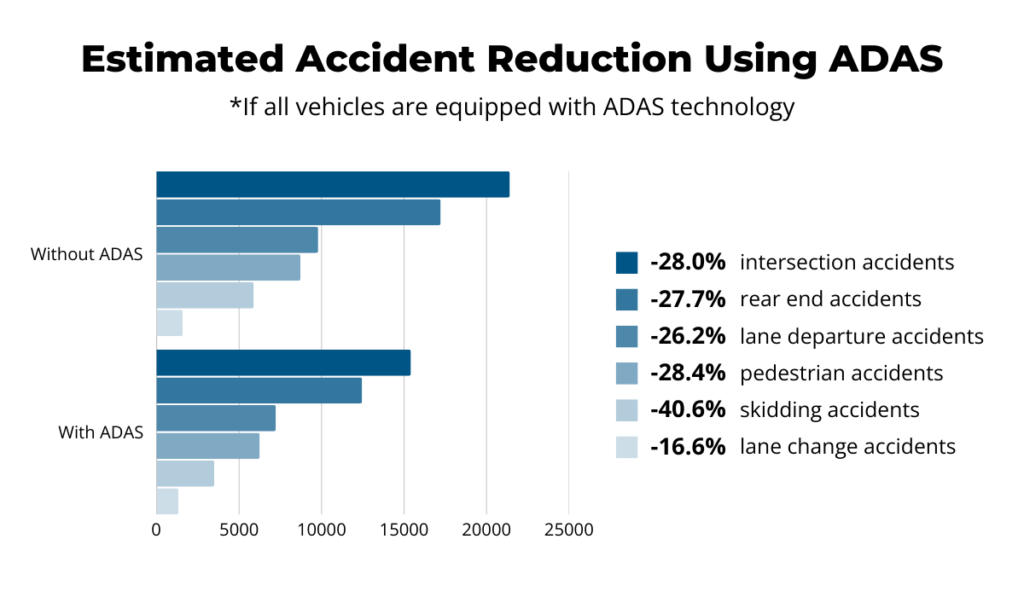
Illustration: GoCodes Asset Tracking / Data: Research Gate
And that’s just looking at the safety angle.
ADAS features like lane-keeping assistance for individual vehicles are complemented by more advanced functionalities such as platooning.
Platooning combines connectivity technology with automated driving support systems.
This synchronization ensures close and consistent distances between multiple vehicles by aligning their speed, braking, and acceleration.
In addition to reducing fatigue and chances of collision in tight job site traffic, this practice optimizes fleet fuel efficiency and reduces drag.
The ADAS technology goes further still, transforming the entire job site by assisting crane operators, as shown in the video below:
Source: Lior Avitan on Youtube
It provides real-time assistance and alerts to drivers in the most challenging environments and for different kinds of vehicles.
Overall, the best advice we can give is to keep your eyes on this still-evolving technology and leverage the improvements it can bring to your fleet.
3. Driver Monitoring Systems
Driver monitoring systems (DMS) are another pivotal technology for enhancing the safety of your entire fleet and operations.
These systems combine different technologies such as:
- dashcams,
- seatbelt sensors,
- biometric monitoring, and
- comprehensive fatigue detection systems.
While some of these features are self-explanatory, more advanced DMS technologies include biometric sensors that can be used to monitor vital signs such as heart rate and blood pressure.
In this way, fleet managers gain valuable insight into driver’s health and conditions that could negatively affect driving.
But wait, if both DMS and ADAS technologies focus on safety, where’s the difference?
In short, ADAS helps prevent accidents through enhanced vehicle control and environmental awareness.
Meanwhile, driver monitoring systems ensure the driver’s alertness by detecting drowsiness and fatigue, medical emergencies, and unsafe behavior.
Research confirms the importance of this technology.
It reveals that fatigue contributes to 20% of accidents on major roads and costs the UK up to £240 million annually in workplace-related incidents alone.
Moreover, different studies have shown that the risk of a crash increases significantly for fatigued drivers.
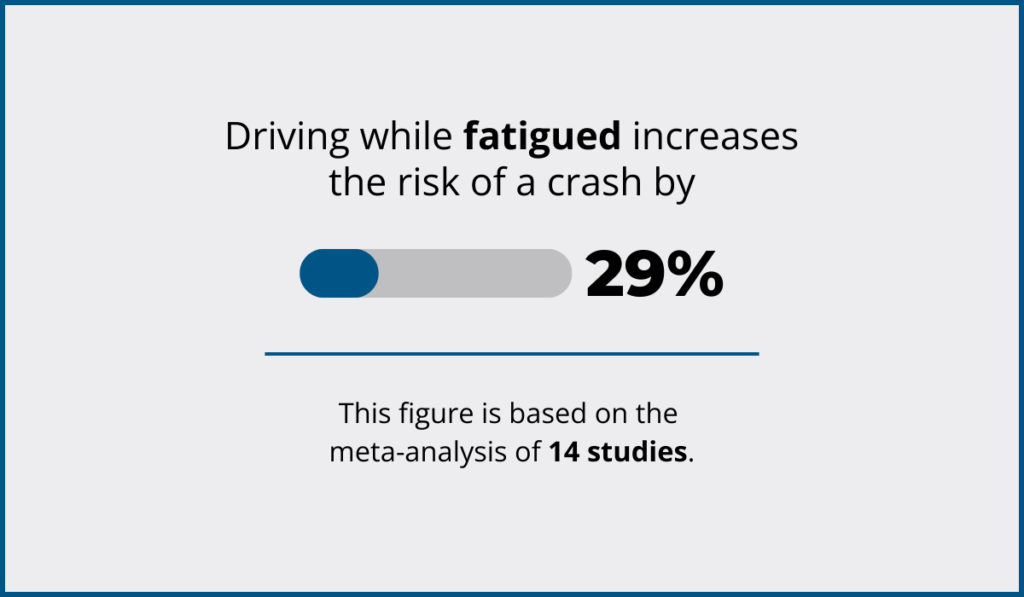
Illustration: GoCodes Asset Tracking / Data: European Commission
The same report by the European Commission shows that fatigue is particularly common among truck drivers, with over half falling asleep at some point.
This growing awareness of fatigue-related risks is driving demand for better road safety regulations and the implementation of mandatory DMS in all new vehicles.
Many companies are eager to embrace these regulatory changes before they’re forced on them.
However, different studies that uncover the palpable benefits of these technologies provide additional motivation.
For instance, Motive’s findings show the effectiveness of AI-powered dash cams in fleet management contexts.
When coupled with driver coaching, this solution reduced accidents by 22% and was even more effective at minimizing unsafe driving incidents.
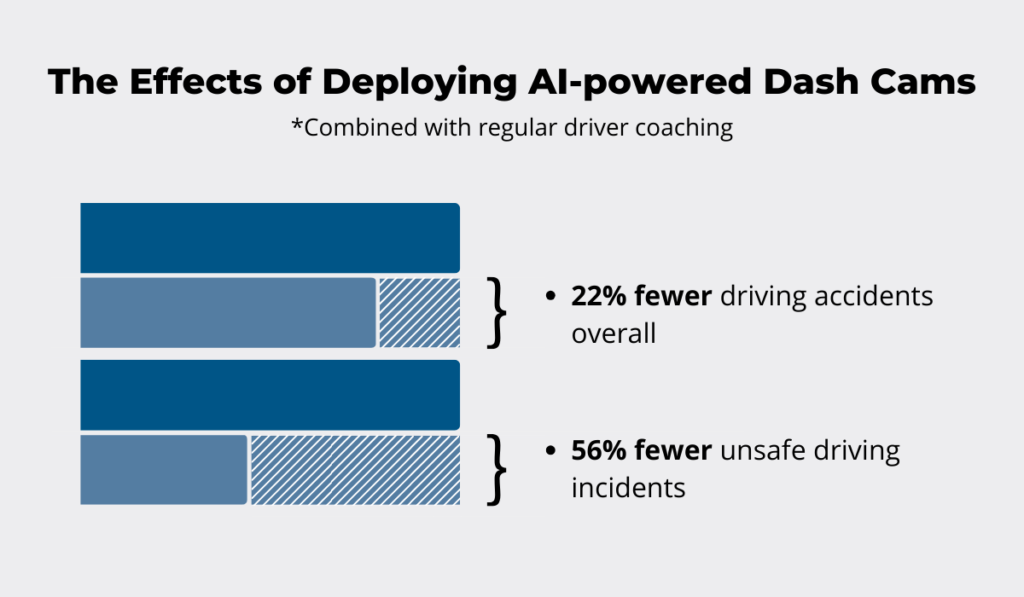
Illustration: GoCodes Asset Tracking / Data: Motive
Now keep in mind that this is just one example of DMS technology—adopting a comprehensive system would deliver even more stunning results.
In conclusion, DMS helps prevent accidents by detecting fatigue, distraction, or any kind of impairment in drivers.
As such, adopting these solutions will improve the overall safety of your fleet while keeping the costs of incidents in check.
4. Telematics and Real-Time Data Monitoring
Real-time monitoring of vehicles and various types of assets using telecommunications technology is no longer just a fleet management trend.
Today, telematics systems are a crucial element in fleet operations, giving you fresh data about your fleet’s locations, usage, and general condition.
The importance of tracking each vehicle’s location in real-time is well recognized and has contributed to the widespread adoption of GPS tracking for both smaller and larger fleets.
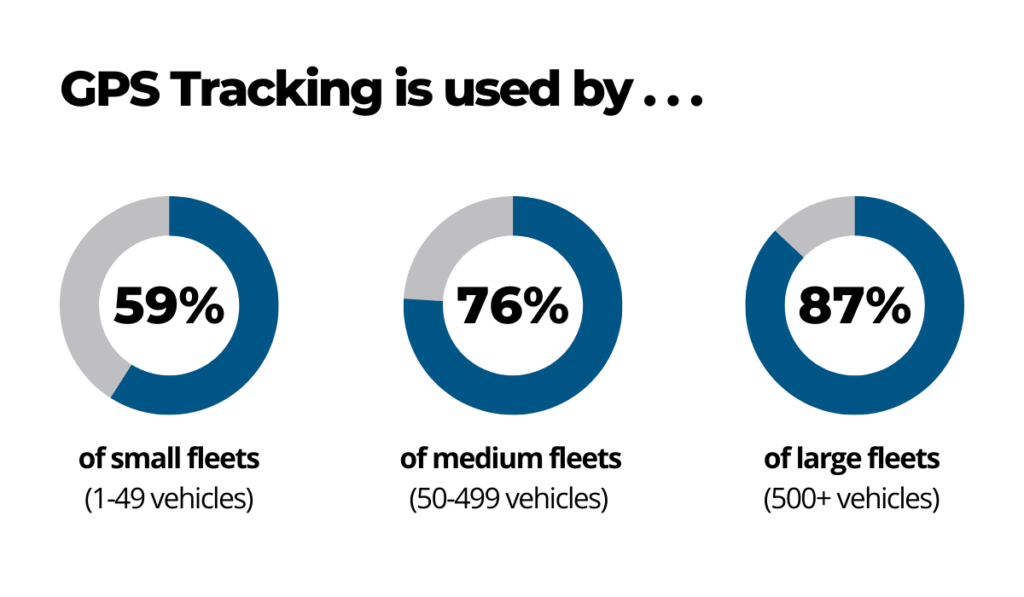
Illustration: GoCodes Asset Tracking / Data: Automotive Fleet Magazine
However, a fleet telematics system provides much broader insights than just location and
movement.
It gives you a 360-degree view of your fleet, enabling you to:
- track vehicle locations and implement geofencing to prevent asset loss and theft,
- monitor vehicle health and introduce better maintenance strategies, and
- make note of asset utilization and driver behavior.
The key lies in collecting data on speed, braking patterns, fuel consumption, engine running time, and more.
Teletrac Navman’s recent survey offers a quick glimpse of how fleet managers use telematics to manage their fleets.
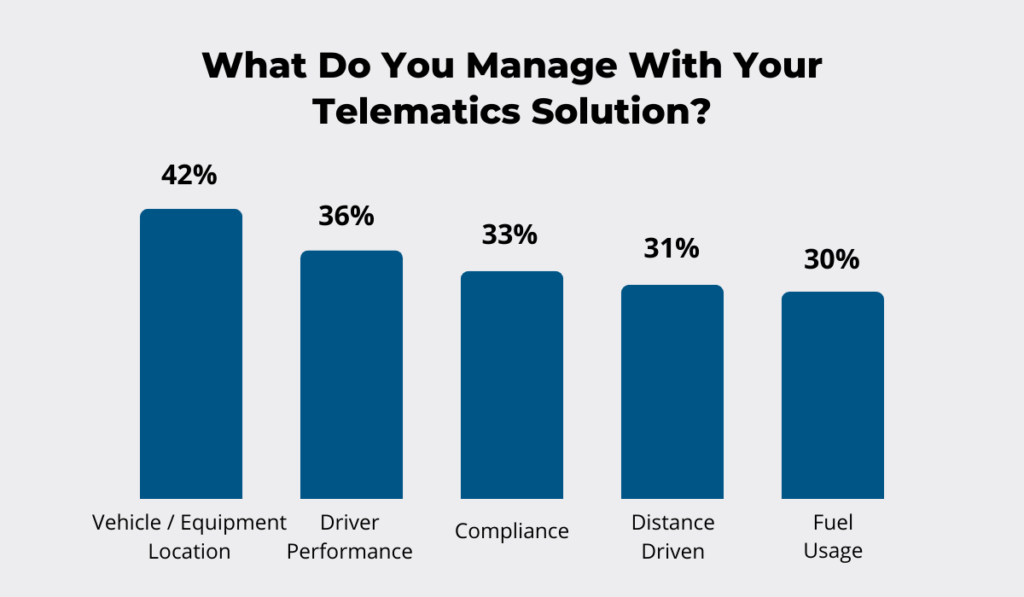
Illustration: GoCodes Asset Tracking / Data: Teletrac Navman
Simply put, managers who use telematics get to know their fleets inside out and do so quickly and easily.
However, there’s one catch.
A surprising number of telematics solutions on the market come equipped with a bulk of costly, yet largely unnecessary features, which can make businesses overlook the essentials.
The key thing to pay attention to is trackers and their capabilities.
For instance, our GoCodes Asset Tracking solution offers powerful real-time GPS trackers that provide near-constant updates while capturing key fleet data.
Plus, integrated geofencing capabilities bolster fleet security and enable instant loss alerts.
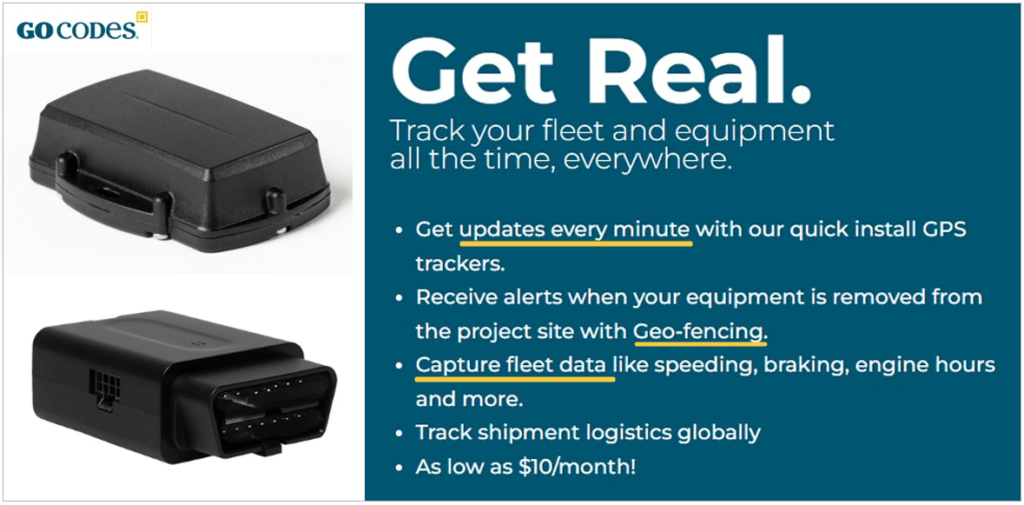
Source: GoCodes Asset Tracking
In other words, all relevant personnel are alerted to any unauthorized or suspicious vehicle movement as soon as it crosses a predefined virtual perimeter.
In addition to improving safety against external threats, GoCodes Asset Tracking’ intuitive reporting enables a comprehensive overview of vital telematics data grouped into several areas.
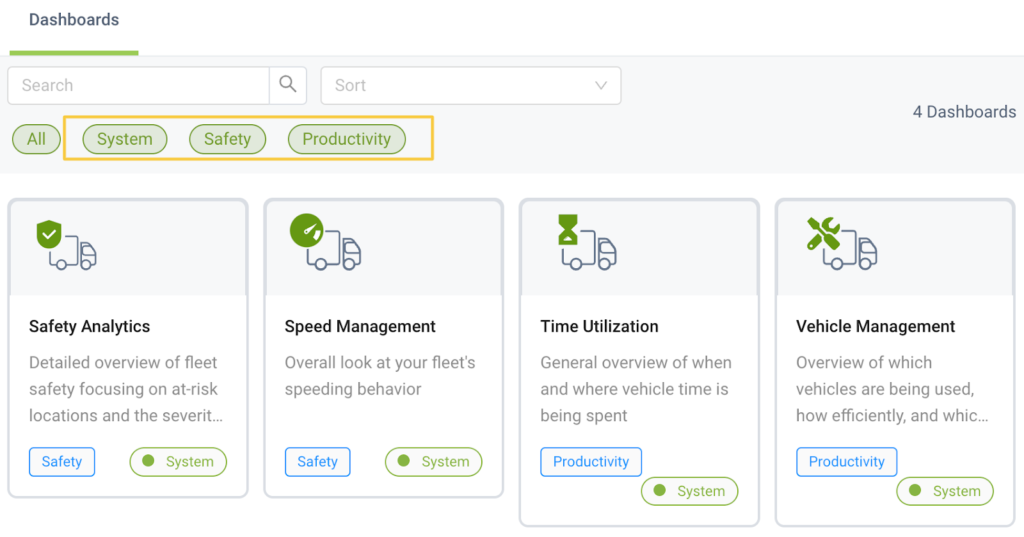
Source: GoCodes Asset Tracking
Now, when it comes to the future of fleet telematics, innovations are happening in several directions, from integrating 5G to transitioning to electric vehicles for sustainability reasons.
Advanced analytics and AI-powered solutions are another big thing, but more on that in the next section.
5. AI-Driven Decision-Making
Today, AI-powered software is probably the main driver of the rapid evolution of fleet management.
Bridgestone Mobility research revealed that the majority of fleet managers from 15 different countries expect to rely on artificial intelligence within the next 5 years.
Moreover, a third of respondents claim AI will have the biggest impact on fleet management.
The reason why is simple.
With IoT and different sensors in place picking up a wealth of data on both vehicles and drivers, there’s an increasing need for analyzing all that information.
That’s where artificial intelligence and data analytics come in.
After combing through volumes of data, the AI identifies patterns and delivers actionable insights that optimize performance and reduce costs, as explained in the video below.
Source: TURILYTIX on Youtube
Data-driven decision-making on anything from preventive maintenance to route optimization offers significant benefits to fleet managers, including:
- efficient routing,
- fuel-saving strategies,
- optimized maintenance schedules,
- enhanced safety, and
- long-term sustainability benefits.
However, many are wary of the regulatory challenges and costs that come with innovation.
For instance, the ABI whitepaper finds that nearly half of respondents cite cost as the top barrier to the adoption of new fleet management technology.
Alex Osaki, the Product Marketing Manager at HERE Technologies acknowledges these and similar challenges but argues that the high ROI is well worth it:
There are new challenges—new customer demands, new regulatory pressures…. Meeting those takes flexibility, and flexibility requires real-time, real-world insight. It’s one more expense, however, this one should pay dividends.
Take logistics and route planning for example.
In addition to uncovering patterns and trends that humans simply couldn’t pick up on, AI analyzes a vast number of variables when proposing possible routes.
Besides basic considerations like driver availability, it takes into account how to make use of loading space, reduce idling time, and even choose the best type of vehicle for specific routes.
Osaki explains that large quantities of data don’t hinder the precision of these calculations—they actually become more accurate the more data you have.

Illustration: GoCodes Asset Tracking / Quote: HERE
To put it simply, route optimization is one obvious use case for AI-driven decision-making, giving rise to dedicated software.
One example of a smart routing solution is DispatchTrack.
Given how time-consuming route planning can be, taking up to several hours even, fleet managers tend not to change routes too often.
With solutions like DispatchTrack, you can automate this process and optimize routes in 10 seconds.
Of course, this is just one use case, and generative AI relies on a continuous refinement process, so it’s just a matter of time before new fleet management advances come knocking.
Conclusion
Fascinating, isn’t it?
The future of fleet management is already here, driven by technologies like cloud computing, ADAS, and telematics systems.
These solutions pave the way for safer roads and streamlined fleet operations.
Moreover, they’re becoming indispensable for industries like construction that thrive on precision, efficiency, and adaptability.
Adopting new technologies will redefine the way you manage fleets, helping your business stay competitive in the ever-evolving market.
Start integrating these solutions into your fleet today, and you’ll be doing more than keeping up.


